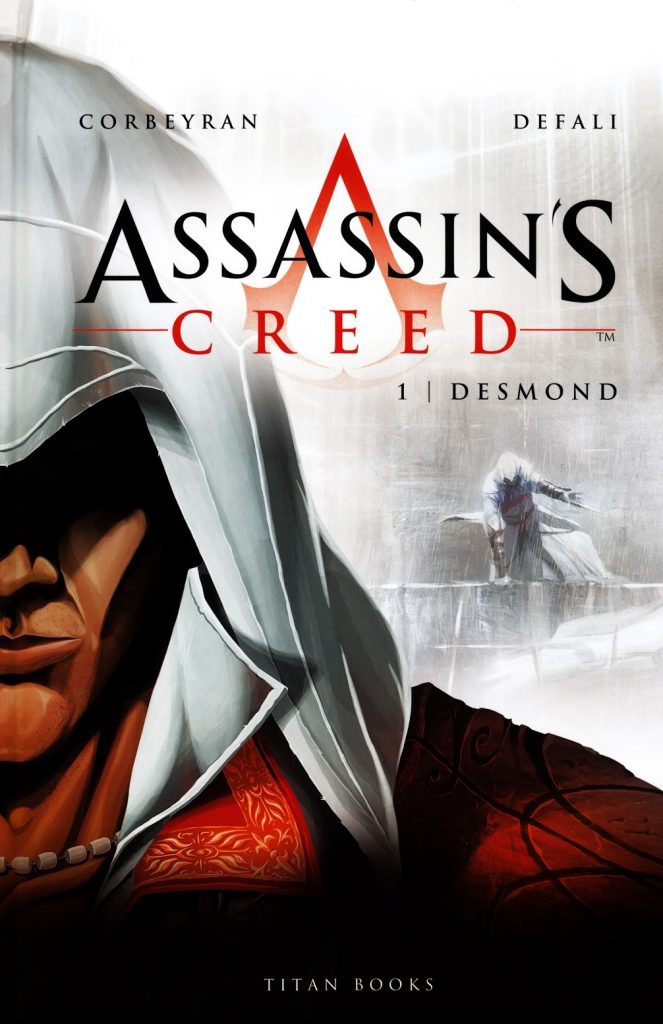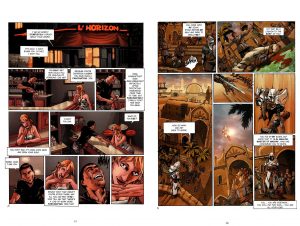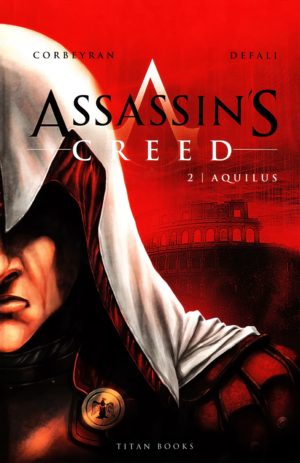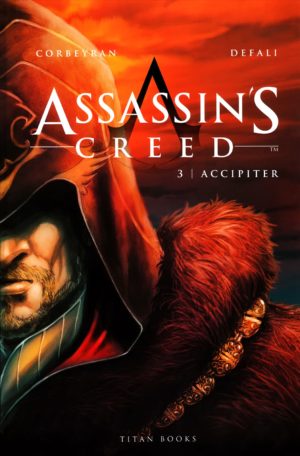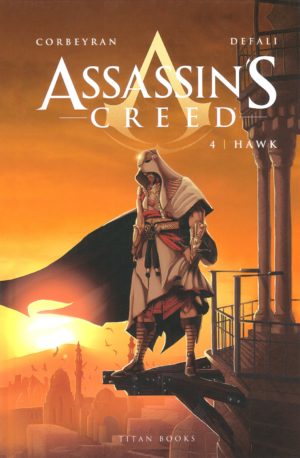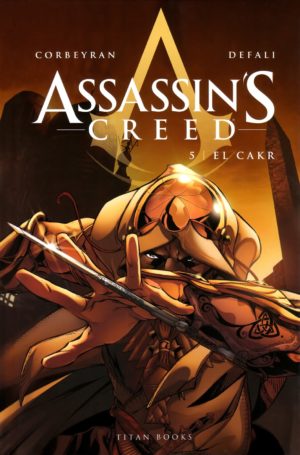Review by Ian Keogh
This first Assassin’s Creed graphic novel was released simultaneously with Assassin’s Creed II, and runs through the events of the first Assassin’s Creed game as seen by Desmond Miles, the character played in the game.
He’s been raised as an Assassin in a secret world of two ancient conflicting forces, the other being the Crusaders (sometimes referred to as the Templars), both wanting global peace, but on their terms. Via their conglomerate Abstergo Industries, the Crusaders have created a device known as the Animus, which enables those using it to in effect live the lives of their direct ancestors, the ultimate purpose being to locate artefacts long lost to the 21st century. Prolonged exposure can transfer the skills of those ancestors, however, it can also induce insanity. Desmond’s ancestry is known to Abstergo, and he’s been abducted to have his ancestral memories sifted. As he experiences them, they’re also monitored by Abstergo.
A French company developed the Assassin’s Creed game, so it makes perfect sense that it first appeared as a French graphic novel. Given the complicated scenarios and assorted cast, it also makes perfect sense that not all game characters are featured, with Desmond an adequate focus to provide the background for what became a very successful subsidiary line for Assassin’s Creed when further graphic novels followed. The ingenious premise allows for historical action in a number of eras, and we see Roman times and even more of the third crusade, as Desmond relives the life of a twelfth century Assassin Altair. That premise carries Desmond a fair way. Eric Corbeyran had a decade of experience of plotting action thrillers beforehand, and his script has a polish, although his dialogue is poorly served via stilted translation and prone to characters explaining themselves. It intrigues as it should, being the first part of a trilogy, leading to a cliffhanger ending continued in Aquilus.
Unfortunately, the art isn’t as convincing. Djilalli Defali’s layouts work, and he pours the detail into some scenes, but his actual panels are frequently crowded and messy, the eyes drawn to the wrong items or struggling to find the focus. This isn’t helped by the muddy colours, primarily the work of Raphael Heddon, which isn’t entirely his fault as he’s attempting to be true to the game’s gloom. However, adjusting the contrast a little would have improved the comics without destroying the atmosphere. Defali’s work does the job without that injection of dynamism that would have raised the story to something better.
Desmond is also collected along with Aquilus and Accipiter in a bulkier hardcover as The Ankh of Isis Trilogy.
